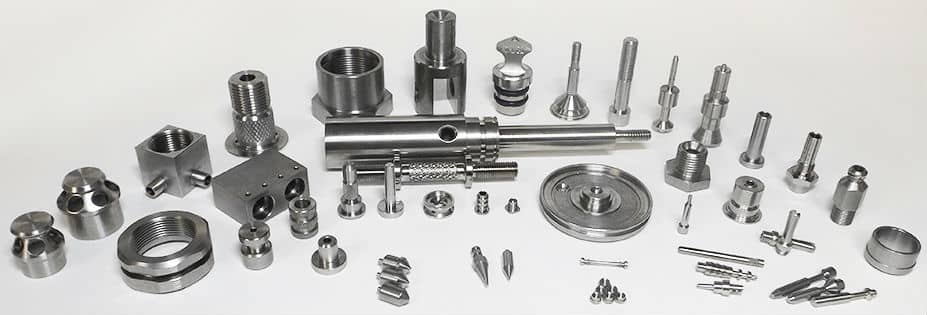In the process of manufacturing precision parts, the use of stainless steel is very common. Stainless steel is favored for its corrosion resistance, high-temperature tolerance, and mechanical strength. However, over time, stainless steel surfaces may develop issues such as stains, scratches, and oxidation, affecting their aesthetics. Polishing is often required to improve the appearance and quality. The correct polishing method is crucial to ensuring the quality of the final product. This article will explore the correct way to polish stainless steel in precision parts manufacturing to ensure satisfactory results.
1.Choose the Right Polishing Tools and Abrasives:
Before polishing stainless steel parts, it’s essential to select the appropriate polishing tools and abrasives. Common polishing tools include polishing cloth, polishing pads, polishing discs, and more. When choosing tools, ensure they match the shape and curves of the parts to ensure uniform polishing. Select the appropriate tools based on different polishing requirements.
There are various types of stainless steel polishing compounds, such as aluminum oxide abrasives, silicon carbide, polishing pastes, and more. Depending on the stainless steel material and surface issues, choose the suitable polishing compound for treatment.
2.Understand the Type and Surface Characteristics of Stainless Steel:
Stainless steel comes in various types, including 304, 316, 430, and more, each with different chemical compositions and surface characteristics. It’s crucial to understand the type of stainless steel being used before polishing because different types may require different polishing methods and abrasive selections.
3.Pre-treat and Clean the Surface:
Before polishing, it’s essential to ensure that the stainless steel surface is clean and free from oil, dust, or impurities. Clean the surface using detergents and solvents to ensure that dirt won’t be pushed onto the surface during polishing or damage the polishing tools.

4.Control Polishing Speed and Pressure:
Apply the polishing compound to the polishing tool and polish the stainless steel surface back and forth at an appropriate speed and pressure. During polishing, it’s necessary to control the speed of the polishing tool and the pressure applied to the part. Excessive speed and pressure can lead to uneven wear or overheating, affecting the polishing results.
5.Choose the Right Abrasive Grit:
The grit of the abrasive will affect the roughness and glossiness of the polishing. Coarser abrasives can be used to remove larger defects, while finer abrasives can be employed to enhance surface gloss. In the stainless steel polishing process, it’s typically necessary to transition gradually from coarse sand to fine sand to achieve the best results.
6.Avoid Cross Contamination:
Before polishing different types of stainless steel or other metals, it’s crucial to clean the polishing tools to prevent cross-contamination and the spread of impurities. This can be achieved by using different polishing tools or cleaning the tools’ surfaces.
7.Regularly Replace Abrasives and Polishing Media:
Abrasives and polishing media wear out with use, so they need to be replaced regularly to ensure consistent and effective polishing.
8.Perform Final Cleaning and Inspection:
After polishing is complete, a final cleaning of the parts is necessary to remove any remaining abrasive particles or dirt. Subsequently, a thorough visual inspection of the polished surface is carried out to ensure that the desired surface quality standards are met.
9.Maintenance:
The polished stainless steel surface should undergo regular maintenance to prevent exposure to humid environments and the reattachment of dirt and oxides.
In conclusion, polishing stainless steel precision parts is a critical step in ensuring the appearance and performance of the final product. The correct polishing method involves carefully selecting tools, abrasives, and controlling polishing parameters, while also understanding the type and characteristics of stainless steel. By following the proper polishing procedures, high-quality stainless steel parts can be achieved, meeting the requirements of various applications, thereby ensuring customer satisfaction and product reliability.



